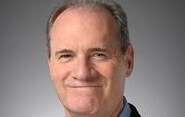 REQUIRED READING: The writer Henrik Ibsen once remarked, ‘Home life ceases to be free and beautiful as soon as it is founded on borrowing and debt.’ However, Ibsen never worked in a mortgage servicing collections department – especially during a period when thousands of people are literally living free and beautiful in their homes while not acknowledging their unpaid home loans.
REQUIRED READING: The writer Henrik Ibsen once remarked, ‘Home life ceases to be free and beautiful as soon as it is founded on borrowing and debt.’ However, Ibsen never worked in a mortgage servicing collections department – especially during a period when thousands of people are literally living free and beautiful in their homes while not acknowledging their unpaid home loans.
In view of the unprecedented nature of today's servicing environment – a massive volume of distressed homeowners coupled with an equally unprecedented volume of new regulatory requirements – the collections process could easily be seen as a Sisyphean labor. However, industry experts concur that there are five key considerations that servicers need to follow in order to achieve effective results in their collections outreach.
The first important step in the collections process is ensuring that you are trying to reach the correct individual. Admittedly, this may sound a little silly – but it is no laughing matter if the wrong person gets the collection calls and letters.
‘We can get in trouble for contacting the wrong person – who can turn around and sue for harassment,’ warns Doreen Hoffman, managing partner of Farmington Hills, Mich.-based Trott Recovery Services PLLC, who adds that borrower records must be kept current. ‘Lots of time, people have moved and have not updated their creditors with their new address.’
When it is clear that the correct individual has been identified, the next step is to determine whether this person is showing signs of possible delinquency.
‘It is important to pay attention to their payment habits in order to catch problems as early as possible,’ advises Megan Von Wald, managing director of credit risk management at Denver-based Allonhill. ‘The earlier a borrower becomes delinquent, the harder it is to bring that borrower current.’
Brian Moore, collections practices director at Seattle-based Varolii Corp., concurs, noting that current trends suggest that people with bill-payment disruptions will not necessarily give urgency to the prompt repayment of their home loans.
‘Mortgages are no longer on top of the bill pile for the average consumer,’ he says. ‘Someone who was low risk yesterday might have lost his job today and may not pay his bills tomorrow. Servicers need to raise the priority of that bill with early and frequent contact to borrowers.’
Of course, trying to alert borrowers that there is a problem is another matter.
‘The emphasis is that servicers need to get the borrowers to answer the phone,’ says Kirk Gerling, senior vice president of home retention at Carrington Mortgage Services, based in Santa Ana, Calif. ‘We realize there is a limited amount of attempts to get borrowers on the phone.’
Kevin Kanouff, CEO of Denver-based Statebridge Co., points out that collectors are between the proverbial rock and hard place when it comes to trying to establish contact with elusive borrowers.
‘Federal regulators and state agencies say you shouldn't foreclose because you did not try hard enough to reach the borrower,’ he says. ‘But the Fair Collections Practices Act says you cannot call too much. Servicers have to find middle ground.’
Assuming that the telephone call is answered, the collector's next challenge is to engage the borrower in a meaningful discussion. Robert Baeza, default services project manager at Foothill Ranch, Calif.-based Quandis Inc., stresses that collectors need to turn the call into a genuine conversation.
‘The collector needs to be both a listener and a counselor,’ he says. ‘He or she need to listen to the call, understand the situation and mutually work out an agreement. Once the collector can establish rapport with the borrower, working out the debt follows.’
‘Collectors need to stress that it is a two-way conversation,’ says Gerling. ‘They need to assess the borrower's situation as it stands today. But it needs to be a two-way conversation – the call is a collaborative effort with borrowers, so it is important to build rapport and make the borrower comfortable. Collectors need to facilitate borrowers in the process, not drag them through it.’
Jay A. Loeb, vice president of strategic development at Lake Forest, Calif.-based National Creditors Connection Inc., points out that changing times call for a more holistic approach to collections.
‘Previously, the collection conversation centered around 'can you make a payment?'’ he recalls. ‘When talking to borrower, it is important to discuss other options than just 'can you make a payment?’ Simply talking about payments hinders loss mitigation and foreclosure prevention options.’
We can work it out
Indeed, today's collection calls seem to focus extensively on mediation rather than on the demand for immediate payments. Trott Recovery Services' Hoffman says this is due, in large part, to public scrutiny of the servicing industry following the robo-signing debacle.
‘A lot of lenders are afraid to go after borrowers because of the media,’ she states. ‘One major bank has more than $120 billion in defaulted second mortgages, but they are not actively pursuing repayment because they're afraid of what the media has to say.’
Thus, collectors are urged to engage borrowers in creating equitable solutions to their overdue debts.
‘The sooner we communicate to borrower about loss mitigation, the better,’ says Moore, adding that borrowers see themselves as equal partners and not as an entity that will merely take orders. ‘Don't forget the 'WIIFM' from the borrower's perspective – the 'what's in it for me.'’Â
John Vella, chief operating officer at Los Angeles-based Equator LLC, observes that today's distressed borrowers are savvier than those of previous years.
‘Today's borrowers are well equipped,’ he says. ‘Before, many of them did not know their options and they scrambled to get as many payments as possible. Now, they may know more than a collector who may have just been hired.’
What collectors know and how they present their knowledge is a matter of evolving discussion within servicing. George Fitzpatrick, senior vice president of the product management, servicing solutions and technology division at Jacksonville, Fla.-based Lender Processing Services Inc., stresses the critical importance of having a collections operation that is well versed in all aspects of borrower outreach.
‘Servicing has gotten larger over last decade, and more siloed,’ he says. ‘Silos need to be broken down. It is important to train someone not just in collecting, but also for loss mitigation, bankruptcy, foreclosure and how to interact as an advocate for the consumer.’
Vella agrees, noting this new degree of versatility is being mandated via federal single point of contact (SPOC) requirements.
‘The individual talking to the borrower is the one who will be resolving the problem,’ he says. ‘That individual is now responsible for diagnosing the underlying problems causing delinquency and prescribing the long-term solution.’
Gerling notes that SPOC requirements reinforce the need for the collector to be able to bring about a satisfactory resolution.
‘Once on the phone, the collector needs to have a one-call resolution strategy,’ he says. ‘There should be an effort to resolve the borrower's issue in one call.’
Of course, the transition from concept to reality is not always smooth. Allonhill's Von Wold suggests that senior management pay close attention to ensure collection calls are being handled correctly.
‘It is important to listen to the collectors' calls and assess if the representatives are asking the proper questions,’ she says.
Gerling notes that one problem that collection calls should avoid is keeping the borrower on hold.
‘In my personal opinion, anything greater than 45 seconds is too long,’ he says.
But having the right collector on the job is no guarantee that employee will be there for the long haul.
‘There is a lot of turnover in that profession,’ says Vella. ‘This is usual for a call-center environment, which has a 15 percent to 30 percent turnover ratio. It is the nature of the job.’
Baeza adds that personnel turnover is not the only thing that is constant – he predicts today's collections practices could easily become antiquated in a few years.
‘Collections is very fluid and cyclical,’ he says. ‘The methodology on collecting is ever evolving. We're going to come full circle again.’











